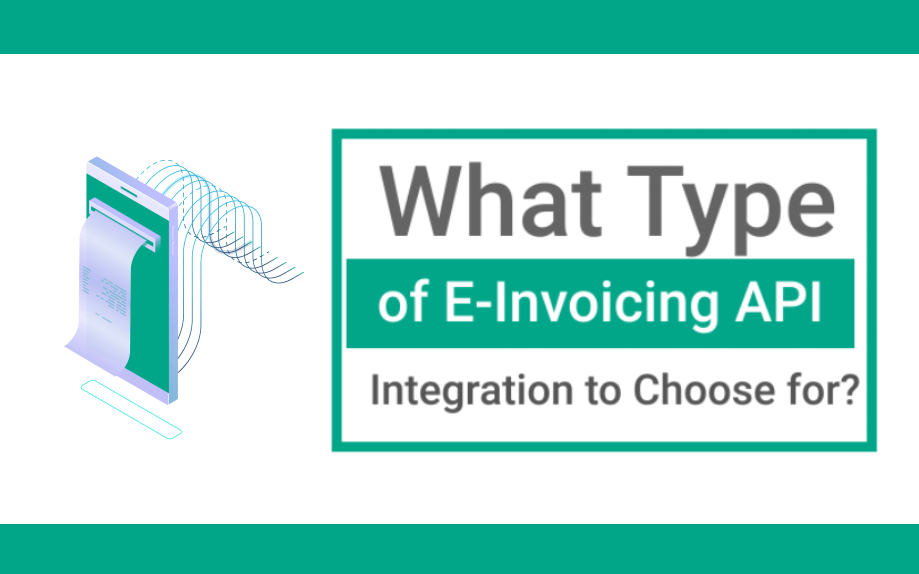What Type of E-Invoicing API Integration to Choose for?
GSTN introduced e-Invoicing for certain taxpayers with effect from 1st Oct 2020 and has been progressively onboarding other taxpayers on the IRP. Currently, e-Invoicing has been enabled for those taxpayers whose aggregate turnover is INR 20 Crores or more from 1st April 2022. They can easily generate e-invoices by using offline utility tools for e-invoicing and bulk e-invoicing. However, these methods can be time-consuming for the taxpayers. So, the GSTN has introduced an e-Invoicing API that integrates with the taxpayer’s ERP and helps in communicating with the IRP. After the integration is performed, the taxpayer’s ERP will generate the e-Invoices in real-time without consuming extra time. Currently, there are two types of e-invoicing API integration and we will help you out with which type of e-invoicing API integration to choose for.

E-Invoicing Integration – Types
There are 2 types of e-invoicing API integration available for taxpayers:
- Direct API integration
- GSP-Based API integration
E-invoicing API Integration – Prerequisites
Here is the list of prerequisites for easy e-invoicing API integration
- The invoice generation system should be automated.
- All traffic from the taxpayer ERP should be free from viruses, malware, and interruptions.
- The taxpayer should adhere to the Information Technology Act, 2000 provisions.
- The taxpayer must adhere to all IT security guidelines and regulatory requirements.
- The taxpayer should have adequate data transmission to connect to the e-Invoice system.
- The taxpayer ought to have a sandbox testing system for testing the integration.
Direct API Integration
The GSTN permits direct API access for all those taxpayers who are under the mandate. (You can refer to this blog to know the latest mandate). The accompanying steps are to be followed:
- The taxpayers should initially test the API integration on the sandbox system set up by the GSTN.
- After the API is tested including the base number of successful and failure cases, the same should be updated in the test results template.
- In case there are extra scenarios then such scenarios ought to be likewise tested.
- The test results ought to be sent to einv.api@gov.in from the Taxpayer’s registered email ID and the IP addresses that need to be whitelisted to access the IRP. A taxpayer can whitelist a maximum of 4 IP addresses.
- The Taxpayers should likewise provide the contact details of the SPOC or Project manager looking after the integration.
- After the evaluation, API access will be provided to the taxpayer.
- The Taxpayer ought to create separate credentials for utilizing the IRP.
GSP API Integration
GST Suvidha Providers (GSPs) are intermediaries authorized by the GSTN that help taxpayers to develop programs that are GST compliant. GSPs have set up predefined APIs that are agreeable with the GSTN’s policies and can be easily integrated into the taxpayer’s ERP. With the help of these APIs, the taxpayers can seamlessly connect to the invoice registration portal (IRP). In this type of integration, the taxpayer’s key activity is to select the most appropriate GSP. Thereafter, the GSP will help the taxpayer with the entire integration process, everyday activities, and data saving.
Note: At the time of beginning set up, the taxpayer should register the GSP on the e-Invoicing portal.
